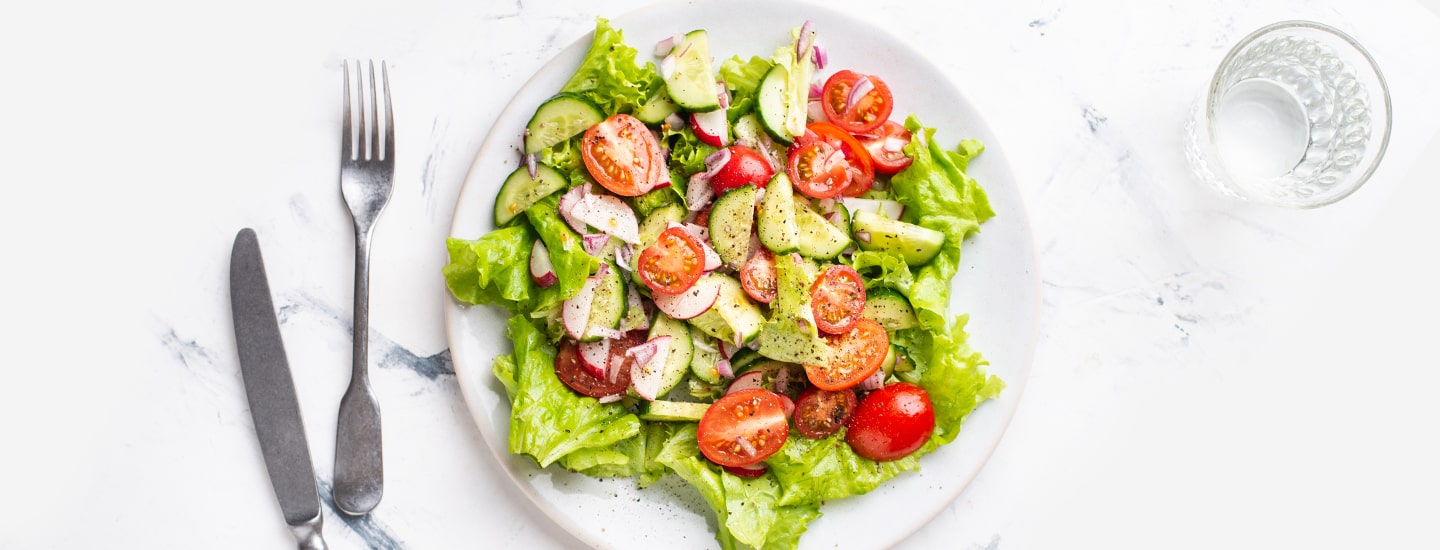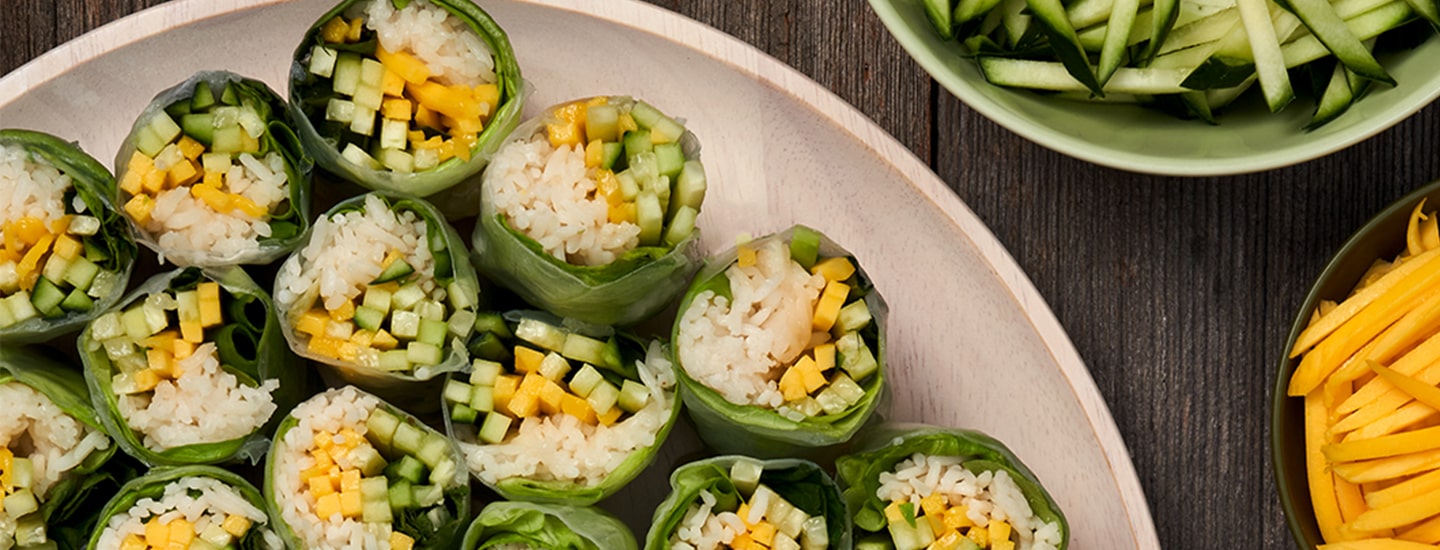
9 Ways to Eat More Sustainably
Check out 9 ways to commit to more sustainable practices when preparing meals in the kitchen.
Living in balance with nature doesn’t mean compromising your enjoyment of food. Check out these nine ways you can commit to more sustainable practices in the kitchen.
1. GROW YOUR OWN PRODUCE
Sustainability starts with how and where your food is grown, and there’s no better or more rewarding practice than growing it yourself. Fresh fruits and veggies not only taste better, but also contain more nutrients. Homegrown food offers benefits for the environment as well:
- No wasteful packaging
- Little to no energy use for transportation storage
- No unwanted pesticides
- Healthier air, water and soil around your home
- A supportive ecosystem for native flora and fauna
2. BUY LOCALLY GROWN INGREDIENTS
For foods you can’t grow on your own, try to buy local. Farmers markets and farm shares through Community Supported Agriculture (CSA) can be great venues for buying fresh, high-quality foods at reasonable prices.
Check to see if your local library has a seed giveaway or seed exchange to get your own garden started — these programs often offer heirloom seeds for varieties best suited for your area.
3. REGROW STORE-BOUGHT PRODUCE
While not every fruit, veggie or herb you buy is viable for propagation, more types of produce can be regrown than you may realize. Potato, green onion, celery, basil and lettuce scraps are just a few kitchen staples you can propagate once you’ve finished prepping your meal.
Try regrowing these:
- Bulb vegetables
- Root vegetables
- Leafy greens
- Herbs
4. COOK WITH SEASONAL FRUITS AND VEGETABLES
At its heart, sustainability is about making the most out of what’s around you. Fresh strawberries are great for a summertime salad, while acorn squash or butternut squash can add hearty flavor to your fall dishes. And since seasonal foods don’t use as much energy and resources as foods grown out of their traditional seasons and grow zones, they also cost less!
5. TAKE A BREAK FROM BEEF
Growing vegetables has a smaller environmental impact than that of raising animals for food (particularly beef), so any diet that incorporates more plants and less meat is a step in the right direction. Livestock raised for meat requires massive amounts of resources, space and time before they yield any reward, so try substituting these plant-based protein sources:
- Beans and legumes
- Nuts and seeds such as walnuts and chia
- Whole grains(open in new tab) like quinoa and wild rice
You don’t have to be a strict vegetarian to cook more sustainably, but if you can commit to eating less meat, you’ll be making a healthier choice!
6. DON’T GET TOO HEATED
The least sustainable cooking methods are those with long cook times and high heat. Conventional ovens, stovetops and grills can take considerable time to heat up, leading to a waste of energy. Microwaves, pressure cookers and air fryers can quickly cook food while preserving a high amount of nutrients. If your favorite recipe absolutely must use a less efficient cooking source, think about any steps that could incorporate a more sustainable cooking method, like steaming veggies in a rice cooker or precooking ingredients in the microwave before transferring to your preferred cooktop.
7. IT’S ALL PART OF THE MEAL PLAN
It’s common sense that when you plan your meals, you’ll shop and eat more responsibly. Bringing your lunch to work eliminates waste such as fast-food packaging, and you’ll save a ton of money, too!
Consider prepping your meals for the week at a convenient time, then freezing portions you can quickly thaw and eat throughout the week. This not only saves time, but also ensures that your meals won’t spoil before you can enjoy them.
8. EMBRACE THE LEFTOVERS
Eating leftovers isn’t just about saving money. Some dishes take on a new life after a day in the fridge, developing a mélange of deeper flavors. Other dishes can be repurposed for new recipes. Get creative; turn yesterday’s vegetable medley into an irresistible pilaf infused with a few herbs, slivered almonds and fluffy basmati rice(open in new tab). Aspiring chefs, this is your time to shine!
Made a little too much lasagna? Donating food is another great way to keep your kitchen sustainable. You’ll avoid wasting food while helping your family, friends and neighbors. You can also contact your local food bank to discuss options for donating.
9. DON’T SCRAP YOUR SCRAPS
Food scraps are the flavorful gift that keeps on giving. Pieces of carrots, onions, celery and parsley that didn’t make it into your dish can be turned into a delicious stock. Season your rice, give your soups a rich, deep flavor or reduce and use as a savory glaze for tomorrow’s roasted veggies.
Of course, no effort to cultivate a more sustainable lifestyle would be complete without a word on composting. It’s one of the most practical ways to run a zero-waste kitchen and can seamlessly link the end of one food cycle with the beginning of another. The food scraps that your compost bin or pile accumulates this year will produce fertile soil that nourishes next year’s bumper crop.
BIG CHANGES START SMALL
When you consider the full life cycle of the food you use, you’ll see that opportunities abound to practice sustainability. By starting long before your food arrives at your kitchen counter and ending long after your stomach is full, you can adopt small changes that make a huge impact on your health, your wallet and the planet.




